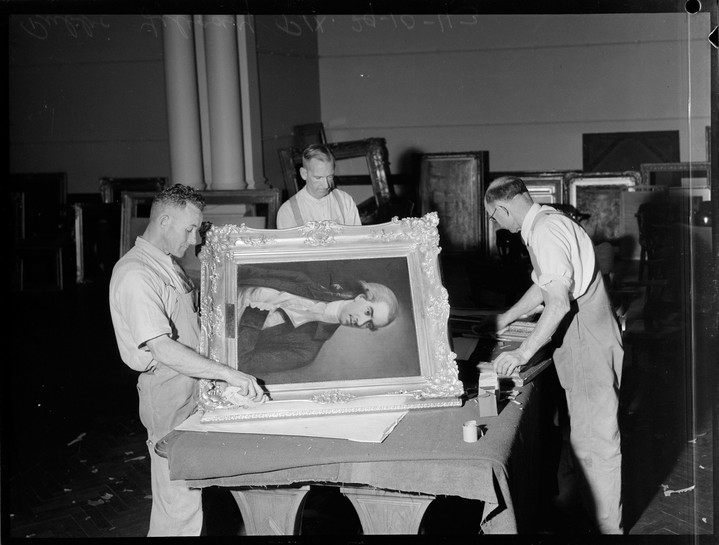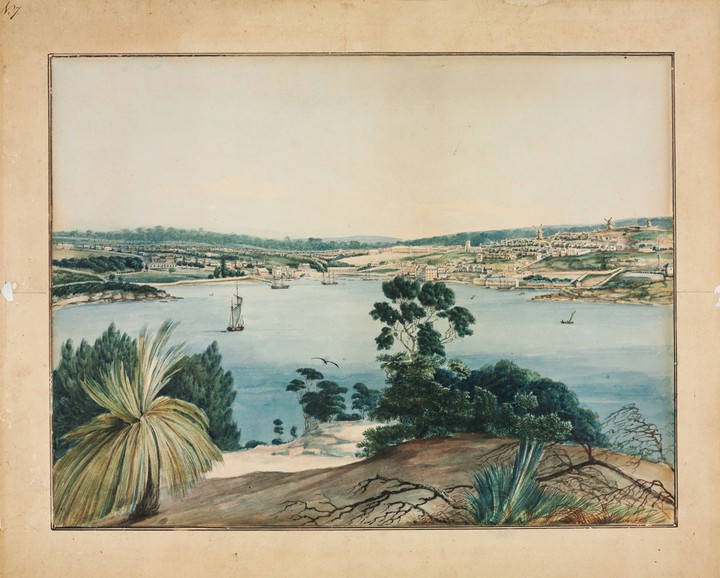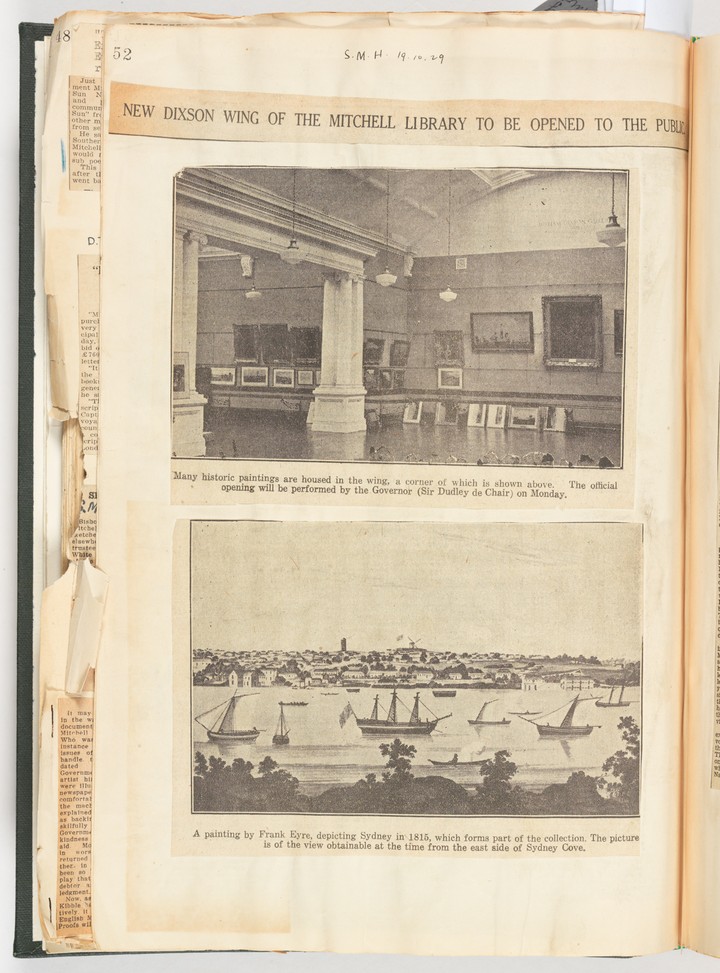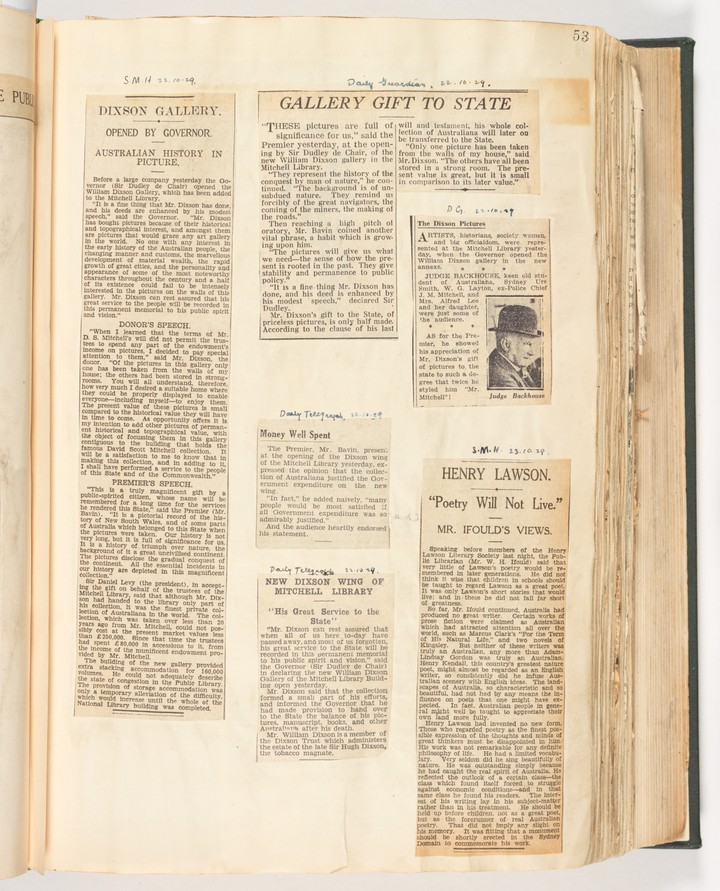The galleries
opened 1910 (Mitchell Gallery) and 1929 (Dixson Gallery)
The three rooms of the Mitchell Gallery and the smaller Dixson Gallery behind occupy the first floor of the Mitchell and Dixson Wings. They can be accessed from the vestibule by the marble staircase, or by the glass walkway from the Macquarie Wing.
The Mitchell Gallery opened as part of the Mitchell Library in 1910, and was originally designed to display pictures and artifacts from the Mitchell collection. The area was extended in 1929 to display the collection of significant historic pictures first offered to the Library by Sir William Dixson in 1919. Designed in the classical style, the rooms feature arched entries and vaulted coffered ceilings similar those in the Mitchell Reading Room and vestibule. The architectural references to ancient Greece are also seen in the ionic columns and plinths. In recent years, a replica of the original tallowood parquetry floor has been installed. Today, the galleries are used for a changing program of exhibitions and displays.
Firsts in show
For its first 20 years, the Mitchell Gallery displayed works by the English maritime painter Sir Oswald Brierly, who lived in NSW in the 1840s, and 60 to 70 works by Conrad Martens and works by other prominent colonial artists including Samuel Gill, Frederick Garling, John Skinner Prout, John William Lewin, Frederick Terry and many others. The Mitchell Library has the largest collection of works by Conrad Martens in the world.
The Dixson Gallery was originally hung with paintings presented by Sir William Dixson in 1929. Sir William’s initial donation comprised 195 paintings, including early oil paintings and watercolours of Sydney and portraits of important figures in Australian history like Thomas Townshend Viscount Sydney, Sir Joseph Banks and Governor Lachlan Macquarie. It was said to be ‘by far the most important addition to the Library’s collections … since the acquisition of the famous David Scott Mitchell collection of Australiana’.* Sir William continued to add to this initial donation throughout his life. By 1943, for instance the Dixson Gallery painting collection numbered 350.
Footnotes
* Annual report of the Public Library of NSW, 1930
War
In 1941, during World War II, 400 cases mostly containing Mitchell manuscripts but also significant paintings were transported to a storeroom at Armidale Teachers College in the Northern Tablelands region of NSW, where they stayed until February 1944. The cases were escorted by principal librarian John Metcalfe and a carpenter, who constructed shelving onsite. A nightwatchman was appointed to guard the collection and he slept outside the storeroom. The H L White stamp collection, which includes Australia’s rarest stamp, the Western Australian four-penny blue ‘inverted swan’, had already been packaged and sent to the Barmedman branch of the Bank of NSW, north of Wagga Wagga, for safekeeping.
Complementary benefactors
Inspired by the extraordinary foresight, generosity and passion of David Scott Mitchell, Sir William Dixson became one of the Library’s most significant benefactors, only surpassed by Mitchell himself. Interestingly Dixson collected in areas that David Scott Mitchell had not – the Mitchell bequest, for instance, did not permit the purchase of pictures so Sir William focused specifically on those. In 1919 Dixson offered his collection of pictures to the Public Library, writing to the Public Library that he:
had a number of valuable pictures packed away, as I have no room to display them. Most of them are of historical value … and it would be a good thing if they were placed where those interested could see them. It is my intention that, sooner or later, they shall go to form part of a national collection.*
It was the offer of this gift that finally encouraged, some ten years later, the Trustees and the NSW government of the day to extend the library by building the Dixson Wing, which opened in 1929 and included the Dixson Gallery.
Footnotes
* Letter to principal
librarian William Ifound 1919
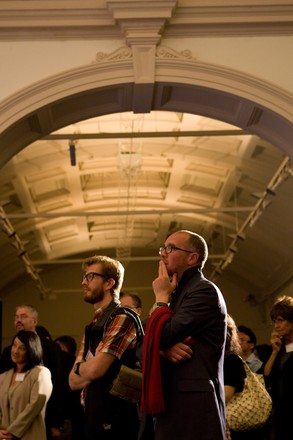


 Back to list
Back to list